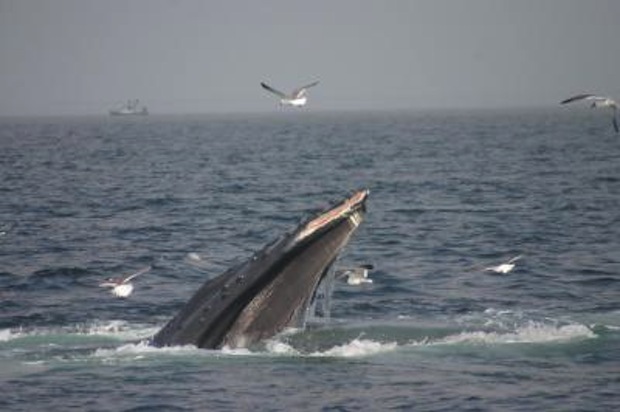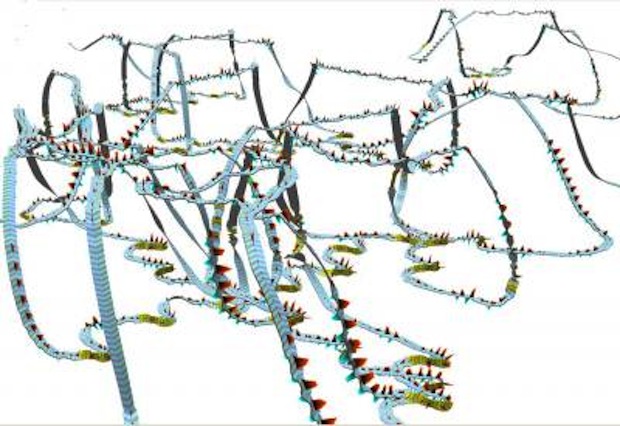Humpback Whales Are Bottom-Feeders, Study Suggests

Just like naughty children on Halloween, humpback whales enjoy midnight snacks. In the case of the whales, this takes the form of a previously unknown behavior, in which the animals repeatedly rotate their bodies and gulp fish just off the seafloor, sometimes making contact with the ocean bottom itself and creating scars on their bodies.
To uncover the behavior, researchers attached sensors to 52 humpback whales in the Gulf of Maine, off the U.S. Northeast coast. The sensors record the endangered animals' location, speed and body orientation, and showed that 40 percent of them whales engaged in this never-before-observed behavior. The feeding, which involves twirling along the ocean bottom and likely scooping up fish, takes place most often between 10 p.m. and 4 a.m., according to the study.
"Humpbacks have not been known as bottom-feeders, yet this is their dominant feeding mode in this region," University of New Hampshire researcher Colin Ware said in a statement from the university. "You've got this prominent species, and until now, nobody knew how they were doing most of their feeding."
This hunting style differs significantly from lunge-feeding, the well-known method wherein humpbacks and other whales speed up and fill their enormous mouths with water and prey, amounting to up to two-thirds of their body weight. They then expel the water and trap the prey with their baleen, hairlike filamentous material that hangs from the roof of the mouth.
The research suggests that whales are more likely to become entangled in fishing gear deployed near the seafloor, such as gill nets (used to catch deep-sea fish) and lobster traps, the study noted. Conservation measures or laws may need to be put in place to prevent this from happening, according to the release, especially since there are many lobster traps and bottom-set fishing gear in the Stellwagen Bank National Marine Sanctuary, where much of the data was collected. Entanglement in fishing gear is considered a threat to the recovery of this endangered species, the study noted.
The scientists speculate the humpbacks are feeding on sand lance, a fish that hangs out just above (and burrows into) the seafloor at night.
It's still unknown exactly how this feeding style works, since the animals proceed more slowly than when they are lunge-feeding, wherein higher speeds are thought to be necessary to force the water into the mouth, according to the study.
Get the world’s most fascinating discoveries delivered straight to your inbox.
"The big mystery is we still don't know exactly how they're feeding," Ware said. "We don't know the mechanism."
Email Douglas Main or follow him on Twitter or Google+. Follow us @livescience, Facebook or Google+. Article originally on LiveScience.




